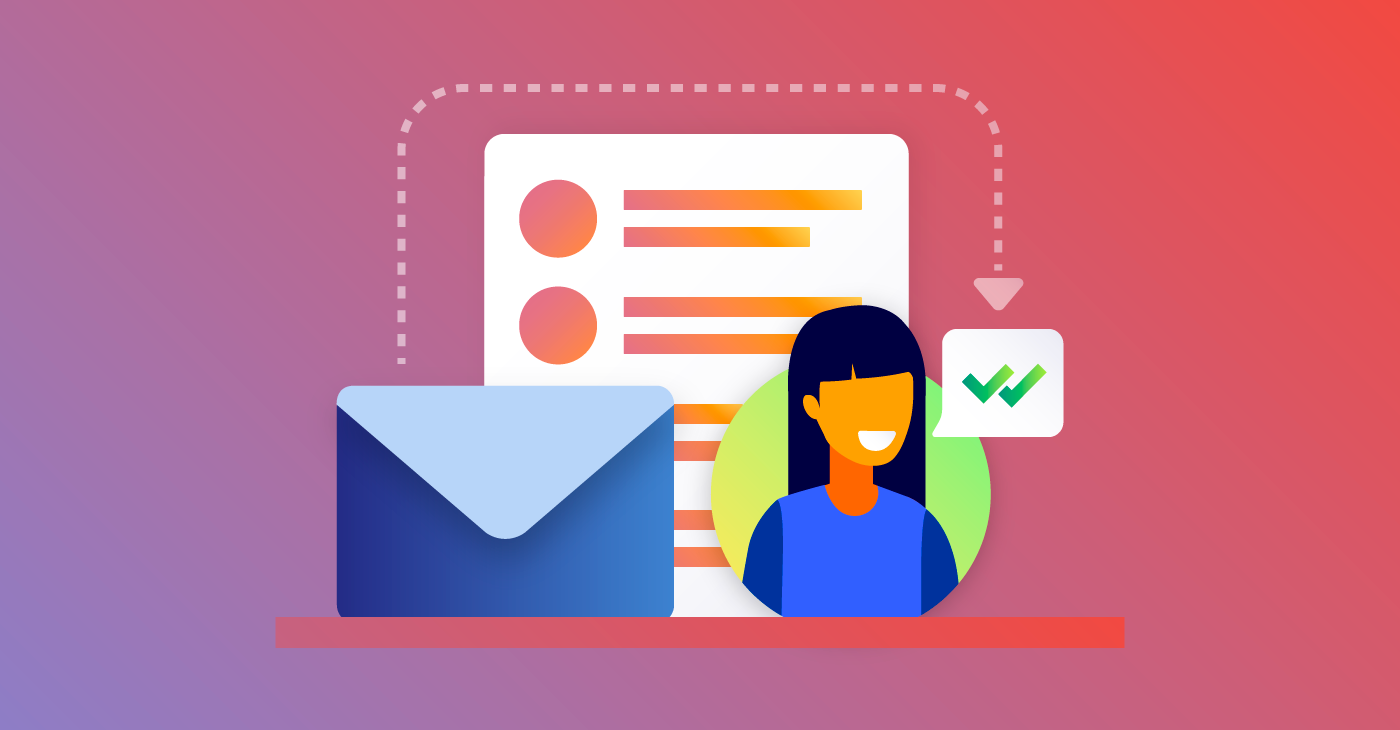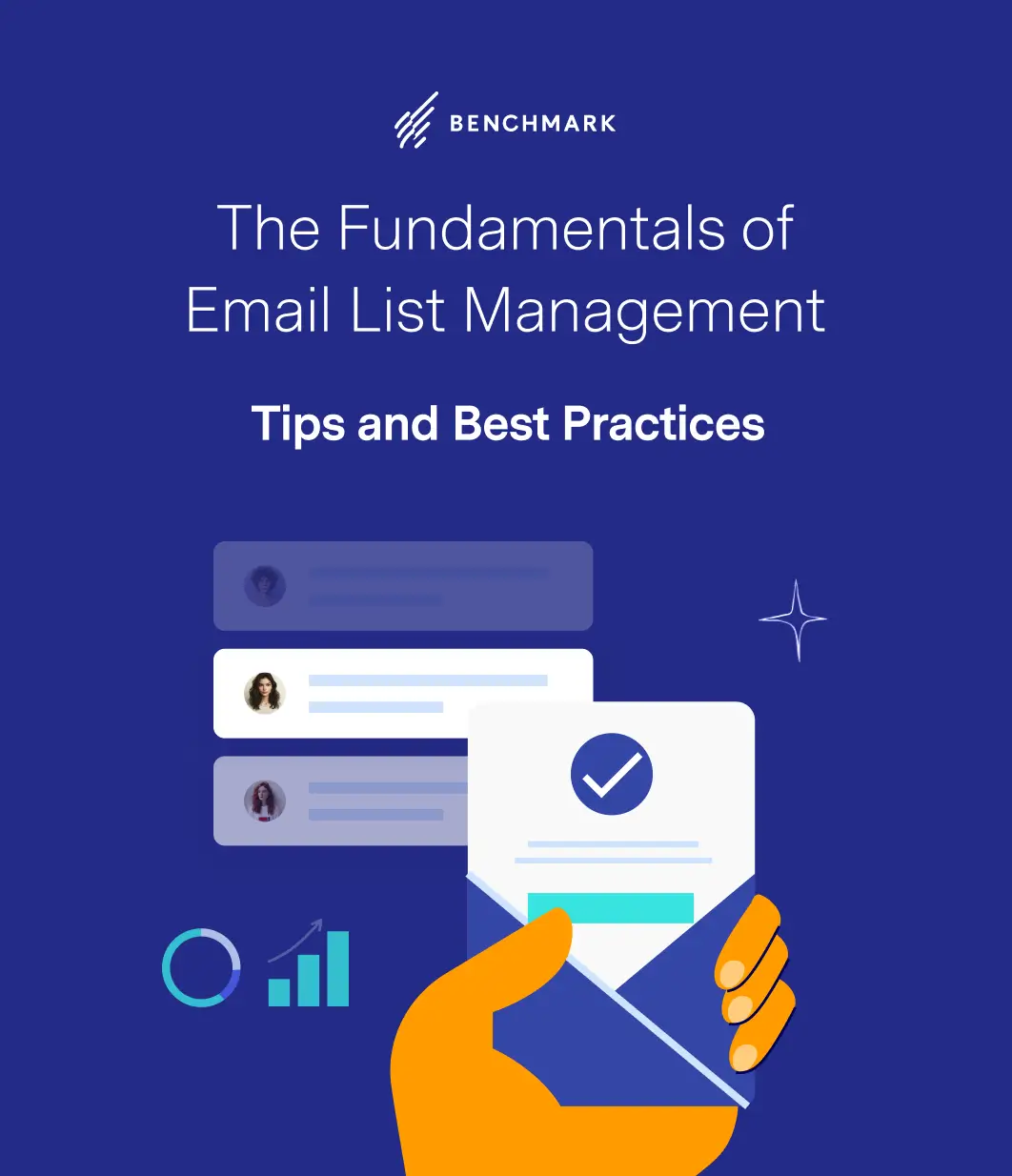Opt-In Email Marketing: How to Create Permission-Based Email Lists
November 23, 2021 5 min read

Many email marketers view a growing email list as proof of success. After all, a large list implies that hundreds or thousands of people have signed up to receive your emails. But how many of those email addresses have actual value? If a large chunk of your emails isn’t opened, are automatically deleted, or bounce back with an error message, then the quality of your list may not be very high.
This is why opt-in is so important. You want your email subscribers to indicate that they want to receive emails from you. If they do, then they’ll be more engaged with your email marketing and actually look forward to hearing from you.
Opt-in isn’t only good for your email engagement; it also aligns with basic email marketing rules and regulations.

What is Opt-In Email Marketing?
The crucial part of the term “opt-in email marketing” is opt-in. As opposed to direct marketing — where businesses use flyers or advertisements to reach as many people as possible, regardless of those people’s interest in the business — opt-in marketing requires people to give their consent to be marketed to. It’s permission-based marketing, meaning users have given their permission for brands to contact them when they sign up.
Why is Opt-In Important?
Not only does opt-in marketing feel less icky than spamming people willy-nilly, but it’s also much more effective. When your subscribers have opted in to hearing from you, they’re less likely to send your messages to the spam folder and more likely to engage with your emails by opening, reading, and clicking on links within them.
That increased engagement can improve your overall email deliverability, too, decreasing your unsubscribe rate and making your messages more likely to land in users’ primary inboxes — which then has a positive effect on your engagement rate. It’s a virtuous circle. Plus, when your subscribers all want to be on your list, the insights you glean from your email data are more accurate and actionable.
Depending on where your subscribers are based, you might not have a choice about using opt-in email marketing. Both GDPR and CAN-Spam regulations require that subscribers have opted in before marketing emails can be sent to them. But remember: opt-in is the better way to go, regardless of the regulations you need to follow. It builds trust in your brand and improves engagement rates, and both of those effects will lead to positive long-term results.
Single vs. Double Opt-In
You already know that opt-in marketing requires subscribers to freely offer their contact information and agree to receive communications from your brand, but did you know that there’s another layer of opt-in that you can add to improve your engagement rates even more?
Double opt-in adds a second step to the sign-up process, making doubly sure that subscribers not only want to be contacted but have also given you the right information. In most cases, double opt-in comes in the form of a confirmation email sent to the address your new subscriber has given you — their permission isn’t confirmed until they click the link in the email confirming their address.
This helps make sure that the email account holder is really the person who signed up for your marketing campaigns, and it also safeguards against adding incorrect email addresses to your list. You want your list to be as clean as possible to keep your bounce rate down and improve your deliverability.
Benchmark Email’s Permission Reminder Feature
At Benchmark Email, we make obtaining double-opt-ins easier for our users.
Permission Reminder will “close the loop,” making your email list lean, mean, and 100% double opt-in. Save time and money by only sending to customers interested in what you have to say.
Permission Reminder benefits include:
- A tighter, more focused list
- More conversions
- Better open rates
- Great reputation with ISPs
- Outstanding delivery rates
- No more spam complaints
- An audience genuinely interested in what you’re selling
Here’s how the system works:
1. You Agree to Send a Permission Reminder to Your List
This means that we’ll take your list and send emails to your customers. In these messages, customers will confirm via a link that they’re still interested in receiving your emails. Once a customer confirms their sign-up, they are now officially double opt-in.
2. We Add Your Confirmed Customers to an Elite, Double Opt-In List
Once a customer confirms their email sign-up, they’ll immediately receive your email campaign or newsletter. We’ll also add them to a choice list of double opt-in subscribers.
3. We’ll Use Special Servers to Send to Your Confirmed Customers
Our high reputation servers are only used to send emails on behalf of customers with double opt-in lists. Using this special server will help you build a great sender reputation, and it will immediately boost your delivery rates.
4. Note that Purchased Lists are NOT Allowed
There are definitive do’s and don’ts when it comes to email lists. If you have bought, rented, or acquired a contact list from a third-party organization or individual, you are prohibited from using our double opt-in process. Benchmark Email requires that you can establish proof that your contacts opted-in to your list. Please contact us for more information.
Tips for Boosting Opt-In Subscriptions
So now that you’re convinced that opt-in email marketing is the best route, how do you get people to opt-in? It can feel scary to move away from bulk mailings and start growing your opt-in list from scratch, but with the right tactics, you’ll have a healthy, much more effective list in less time than you think.
Here are some of our favorite tips for growing your opt-in list:
- Get strategic with website forms. Use pop-ups on high-traffic pages of your website and optimized landing pages to draw in leads. What makes these forms so appealing is that they’re set it and forget it technology. Once you’ve created a custom signup form, you can place the code on every page of your site, gathering sign-ups from wherever your guests end up. At Benchmark Email, each and every sign-up is automatically added to your email list. The best part of your signup form is the record it keeps of every sign-up. This means that if someone hits the spam button, you can show email providers that you have permission from them to send and that hitting the spam button is a mistake on their part.
- Offer an incentive, like 10% off new subscribers’ next order or free shipping in exchange for signing up for your email newsletters.
- Empower subscribers by giving them a choice of which kinds of emails they’d like to receive. This can help you personalize your emails and cater to their particular needs, improving the customer experience.
- Make it worth their while with content that’s interesting, funny, or adds value in some other way. The better your content, the higher your engagement will be, and subscribers may also forward your emails to their contacts, garnering you some new sign-ups.
We hope the biggest lesson you learned from reading this article is that opt-in emails are the best way to ensure your email list is filled with high-quality, engaged subscribers. And, if you want to take it one step further, implement a double-opt-in approach, using Benchmark Email’s Permission Reminder feature. Learn more about it by contacting us today!






